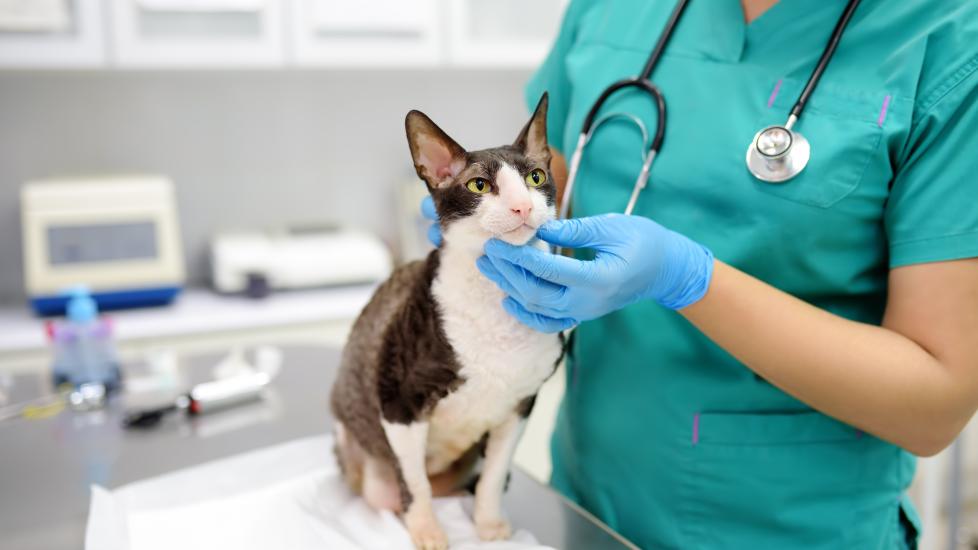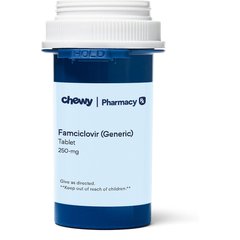Why Is My Cat Sneezing?
Adobe Stock/Maria Sbytova
Sneezing is a useful bodily function in which the body forcefully expels irritants from the nose. Many animal species sneeze, including dogs, chickens, elephants, certain lizards, and cats.
Here’s what you need to know about cat sneezing—from the causes and concerns to how to help.
Why Do Cats Sneeze?
If your cat’s sneezing occasionally, it may just be part of the normal process to clear their nose and usually isn’t concerning. However, if the sneezing is persistent or if other symptoms are present, it may indicate an underlying disease.
Cat sneezing can be surprisingly difficult to diagnose, for several reasons. First, your veterinarian will need to confirm that your cat is actually sneezing.
Coughing, gagging, reverse sneezing, hiccupping, retching, and wheezing can all be misidentified as a sneeze, and each of these symptoms come with a separate list of possible causes.
Take a video of your cat during a sneezing episode to help your vet confirm whether it really is a sneeze.
Other Cat Sneezing Causes
Another obstacle in diagnosing cat sneezing is the plethora of underlying causes. Here are some of the possible underlying causes of sneezing in cats.
1. Viral Respiratory Infections
For a cat sneezing a lot, viral upper respiratory infections might be the problem. The most prevalent infection is feline herpesvirus. Unlike in people, herpesvirus in cats causes primarily upper respiratory signs, including sneezing and discharge from the nose and eyes. Symptoms of feline herpesvirus can be exacerbated by stress.
Feline herpes can lie dormant but go through cycles of being active. For example, your cat may recover from their respiratory signs and do well for some time, and then become ill again when a stressful situation occurs.
While there’s currently no cure, some veterinarians may treat with antiviral such as famciclovir and lysine supplementation. Other viral infections that can contribute to cat sneezing include calicivirus (which the FVRCP combo vaccine protects against) and influenza.
2. Bacterial Infections
Bacterial infections almost always play a secondary role in upper respiratory symptoms in cats. If you see yellow or green snot emerging from your sneezing cat’s nose or eyes, this abnormally colored discharge is a sign of a bacterial infection.
Bordetella, mycoplasma, and chlamydia are all common culprits of bacterial infections in a cat’s nose. Treatment with antibiotics can dramatically reduce a cat’s sneezing and other symptoms, allowing them to breathe more comfortably.
3. Inflammation and Irritation
If your cat’s sneezing a lot, it could be because of inflammation and irritation in the nose. Inflammation can be secondary to many different conditions and infections.
Inflammation itself can cause a cat to sneeze, creating a feedback loop where cats continue to sneeze long after the initial problem is addressed. This is typically referred to as chronic rhinitis.
Other than a nasal biopsy that must be done under anesthesia, there’s no good test for diagnosing an inflammatory condition as the sole cause of sneezing in cats. Typically, inflammation is identified as the cause only after all other causes are ruled out.
Your veterinarian will determine the best course of treatment for your pet, which may include oral steroids or nonsteroidal anti-inflammatory drugs (NSAIDS) to help with inflammation.
4. Foreign Material
Inhaling a foreign material, such as blades of grass, can of course cause irritation in the nasal passages. When these intruders are inhaled by a cat, the body’s response is to sneeze to expel the foreign debris. While this approach might work for smaller particles like dust, larger objects are difficult for a cat to remove through sneezing.
These situations can be diagnosed with:
-
Rhinoscopy: A camera is inserted into the nose of an anesthetized cat
-
Nasal flush: Sterile saline is forced through the nasal passages under anesthesia to remove the material that the cat is unable to sneeze away
5. Dental Disease
Dental disease can also contribute to cat sneezing.
Teeth roots on the upper jaw are located right next to the nasal passages. When teeth become infected or when severe inflammation exists, the barrier between the tooth socket and the nose can be penetrated. So, when the cat eats, food material can enter the nose and trigger a sneeze.
Treating the dental disease will typically alleviate your cat’s sneezing.
6. Neoplasia (Tumors)
In older cats especially, tumors can grow inside the nasal passage, creating irritation and inflammation that causes the cat to sneeze, often producing nasal discharge and blood. These tumors are typically detected visually via rhinoscopy or a nasal biopsy.
7. Fungal Infections
Although less common than viral or bacterial infections, fungal infections are a known cause of sneezing in cats. A fungus called Cryptococcus is the usual suspect.
A physical exam alone isn’t enough to distinguish a fungal infection from other causes of cat sneezing, so rhinoscopy or a biopsy are usually required for a diagnosis. Treatment options may include a combination of oral anti-fungal medications, nasal infusions of anti-fungal medications, and/or surgery.
Why Does My Cat Keep Sneezing? Is It Serious?
How serious your cat’s sneezing is depends on whether the cause is environmental or a disease.
Sometimes the irritants that trigger the sneeze reflex are environmental, such as dust, mold, or pollen. When inhaled, the cat sneezes. In these cases, sneezing is usually not serious, especially if seen in an isolated episode.
More often, though, cat sneezing is caused by one or more disease processes. Most commonly, a viral infection is the initial problem, with subsequent inflammation and bacterial infections causing damage to the architecture inside the nose, perpetuating the problem.
If your cat starts sneezing suddenly and over several days, treatment is likely needed.
When To See a Vet for Your Cat’s Sneezing
It’s never a bad idea to take your cat to the vet as soon as you notice a problem, even if your cat keeps sneezing but seems fine otherwise.
However, a sneezing cat that’s experiencing other symptoms can mean something more serious is happening. Visit your vet as soon as possible if the following signs are also present:
-
Nasal discharge
-
Worsening of symptoms
-
Persistence of symptoms beyond a few days
Health Tools
Not sure whether to see a vet?
Cat Sneezing With Other Symptoms
Cat sneezing in conjunction with other signs is common. But it doesn’t always help veterinarians narrow down the cause.
-
A cat sneezing and coughing typically means that it’s primarily an upper respiratory process with postnasal drip irritating the throat.
-
A cat sneezing and wheezing can suggest concurrent lower respiratory disease.
-
A cat sneezing blood or other discharge should be photographed for your veterinarian. Contact your vet if this happens.
How Do Vets Determine the Cause of Cat Sneezing?
Here are some ways your vet can determine why your cat is sneezing a lot.
Physical Exam
Your vet may want to first run some baseline tests to evaluate the overall health of your cat. A dental exam should be a part of the initial physical exam to investigate whether dental disease may be causing the sneezing.
Imaging
Imaging can be useful to look for underlying causes and to evaluate the degree of damage to the inside of the nose.
Your veterinarian can take X-rays of your cat’s head and chest, but the gold standard for imaging sneezing cats is a computerized tomography scan, which requires general anesthesia and is typically done in emergency or referral hospitals.
Rhinoscopy
Rhinoscopy, in which a camera is inserted into the nasal passages of an anesthetized cat, can be used to search for tumors, fungal plaques, or foreign material.
Biopsy
Biopsies of the nasal cavity walls may be taken during rhinoscopy to search for inflammatory, fungal, and cancerous causes of sneezing.
Nasal Lavage
Flushing the nasal passages while the cat is under anesthesia can sometimes reveal diagnostic information (e.g., dislodging a foreign body). This is also a treatment.
How To Treat a Sneezing Cat
Treatment for cat sneezing is typically targeted at the underlying cause. While a wide variety of treatments are available, pet parents should be aware that the goal in most cases, especially chronic cases, is to reduce the frequency and severity of symptoms—not to cure them.
Antibiotics
Although bacterial infections are rarely the primary problem for a sneezing cat, antibiotics are often used for such cases. These drugs make the cat feel better quite quickly.
Nasal Lavage
A nasal lavage under general anesthesia can relieve clinical signs temporarily, regardless of the cause. This procedure can also dislodge hidden foreign material, if present.
Other Treatments
Other treatments, which have variable levels of effectiveness, include:
-
Humidifiers or nebulizers
-
Steroids
-
Antihistamines
-
NSAIDs
-
Decongestants
-
Anti-nausea medications
-
Surgery (in rare cases)
References
VEIR J, LAPPIN M, DOW S. Evaluation of a novel immunotherapy for treatment of chronic rhinitis in cats. Journal of Feline Medicine & Surgery. 2006


